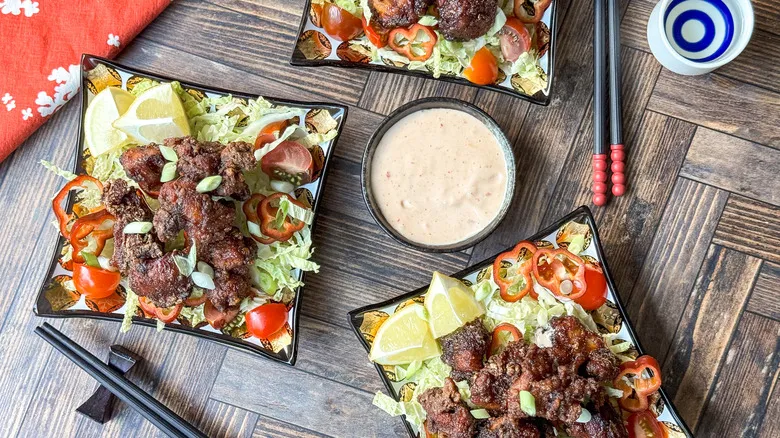Gather the Japanese twice-fried chicken karaage ingredients

This recipe features boneless, skinless chicken thighs, which remain juicy and tender without the need for skin to achieve crispiness. By piercing the thighs with a fork before chopping and marinating, you create additional openings for the marinade to penetrate the meat. To prepare the flavorful karaage marinade, Kinnaird incorporates dark soy sauce for a robust taste, high-quality sake, freshly grated ginger, minced garlic, ground white pepper, and a touch of Japanese Kewpie mayo. The mayo not only enhances flavor but also helps to tenderize the meat and lock in moisture. If dark soy sauce isn't available, a lighter version can be substituted. Pure potato starch is used to coat the chicken, while avocado oil or another high smoke point vegetable oil is ideal for frying. For a dipping sauce, mix more Kewpie mayo with either sweet or spicy chili sauce, depending on your preference, or use it as a dressing over a salad of shredded Napa cabbage, cherry tomatoes, and sliced sweet peppers like Anaheim or banana varieties. Fresh lemon wedges add a delightful acidity to the freshly fried karaage chicken, balancing its richness. Finally, garnish with thinly sliced scallions for an extra touch.
Step 1: Pierce the chicken with a fork
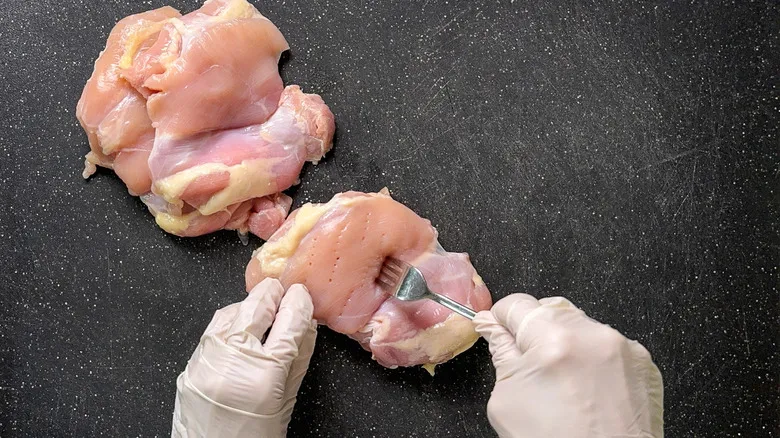
Position the chicken on a cutting board and poke it all over with a fork to enable the marinade to soak in.
Step 2: Cut the chicken
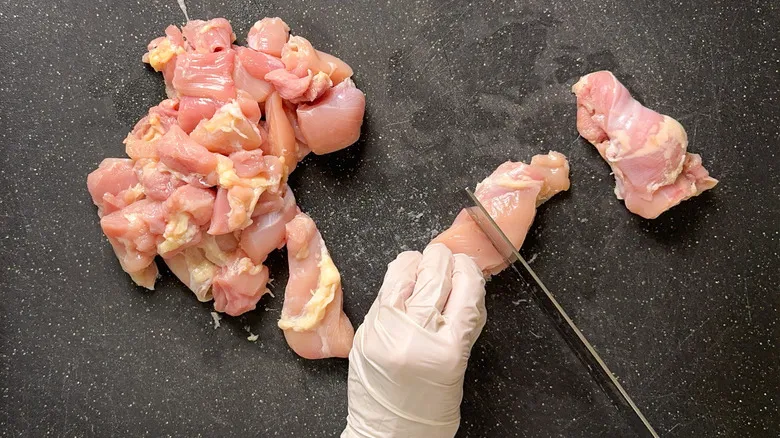
Chop the chicken into small, bite-sized chunks.
Step 3: Place the chicken in a bag
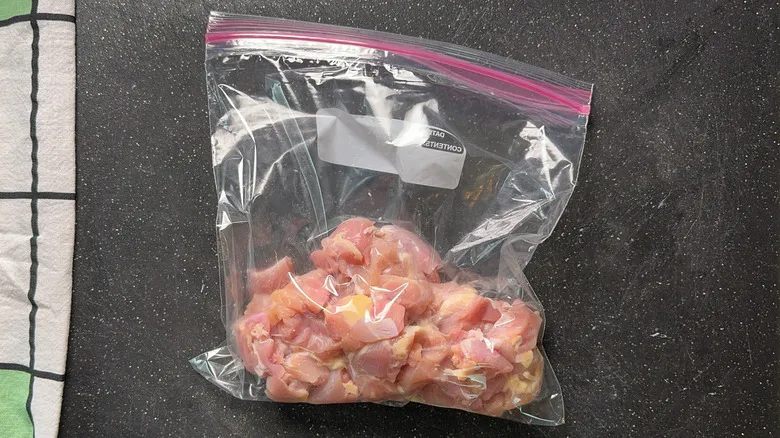
Place the chicken into a plastic bag.
Step 4: Add the marinade ingredients
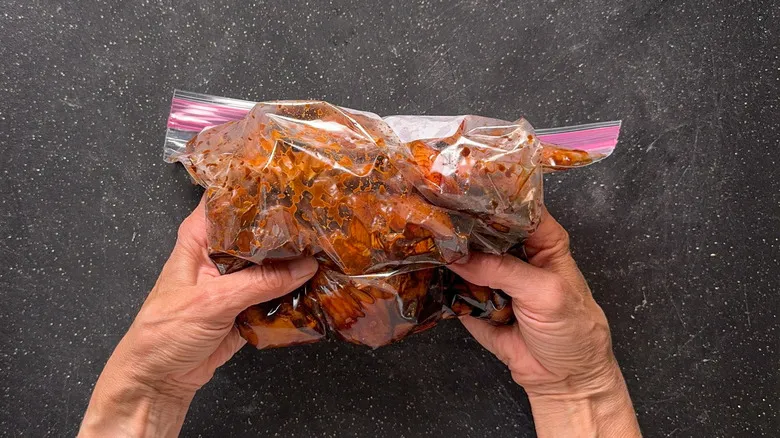
Incorporate the soy sauce, sake, 1 tablespoon of mayonnaise, ginger, garlic, and white pepper. Seal the bag and gently massage it to ensure the chicken is evenly coated.
Step 5: Refrigerate the chicken
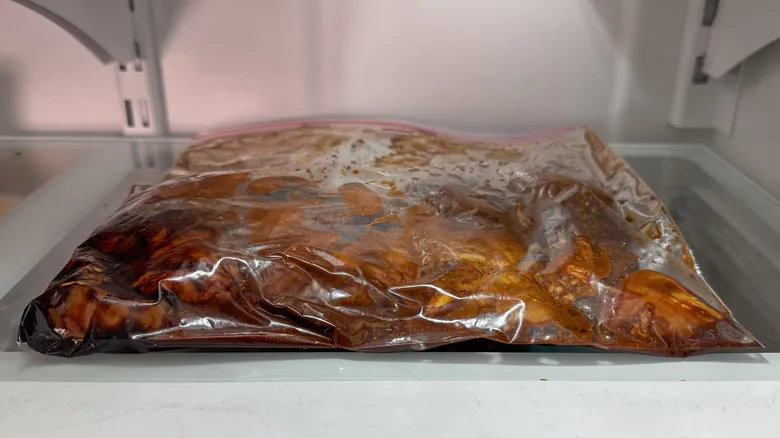
Put the chicken in the refrigerator for a minimum of 30 minutes and a maximum of 4 hours.
Step 6: Make the mayo dipping sauce
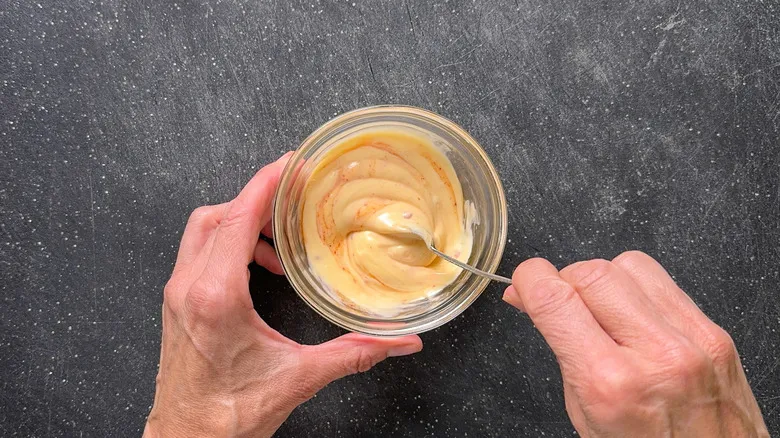
As the chicken marinates, combine the remaining ½ cup of mayonnaise with the chili sauce, then refrigerate until it's time to serve.
Step 7: Drain the chicken
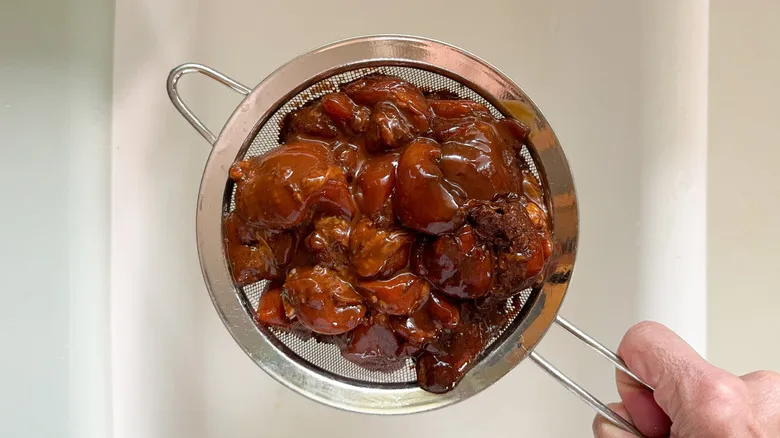
Remove the excess marinade from the chicken.
Step 8: Transfer the chicken to a shallow dish
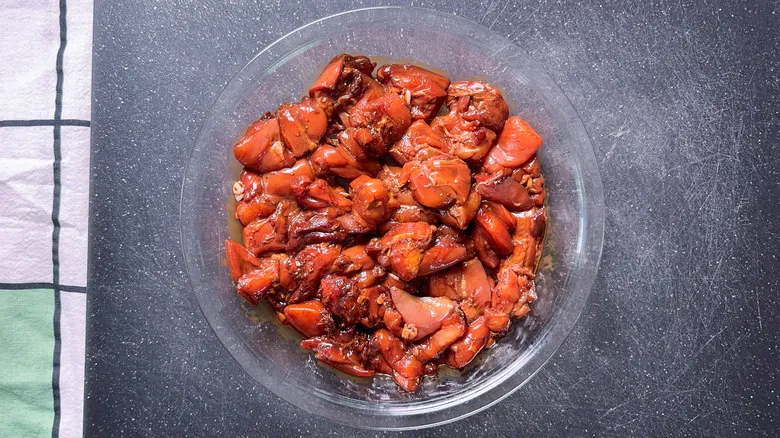
Move the chicken to a shallow plate and pat it dry with a paper towel to eliminate any excess moisture.
Step 9: Heat the oil
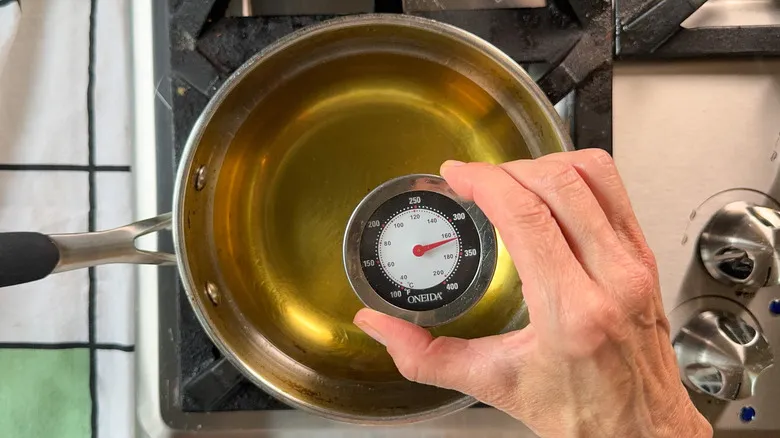
Warm the oil in a sturdy medium pot until it attains a temperature of 325°F.
Step 10: Dredge the chicken with the potato starch
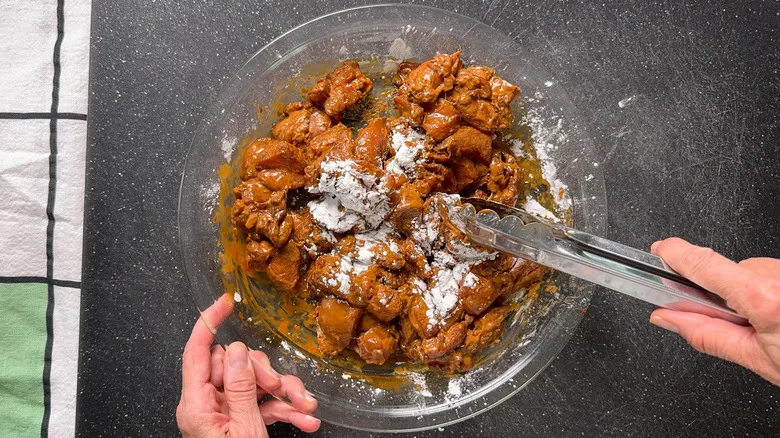
In the meantime, coat the chicken with potato starch, ensuring that every piece is fully covered.
Step 11: Fry the chicken in batches
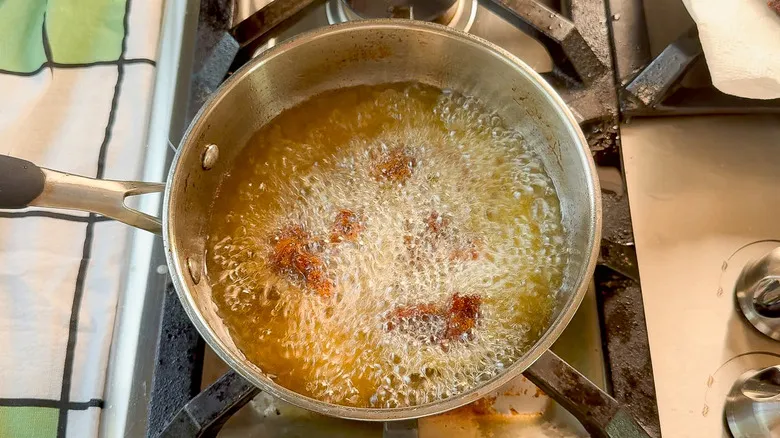
When the oil is heated, cook the chicken in portions for approximately 2 minutes.
Step 12: Rest the chicken
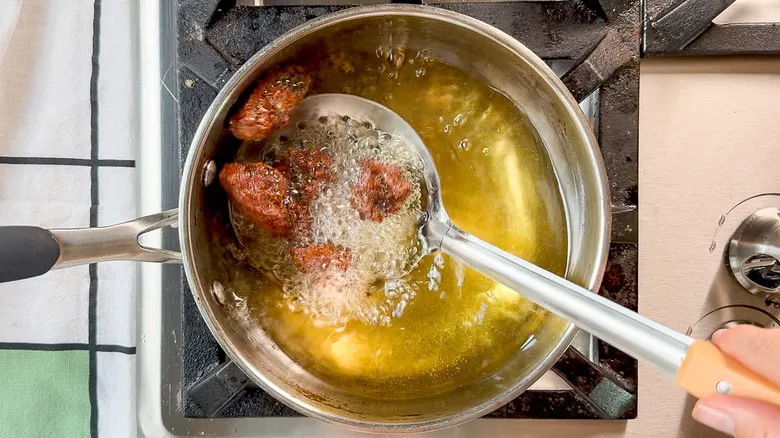
Using a heat-resistant slotted spoon, transfer the chicken to a plate lined with paper towels. Repeat this process until all the chicken is fried. Allow it to rest for 5 minutes.
Step 13: Increase the oil temperature
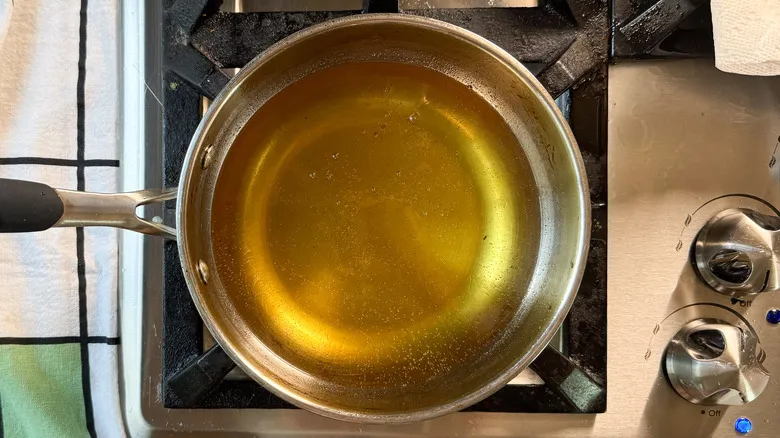
Heat the oil to 375 degrees Fahrenheit.
Step 14: Fry the chicken a second time
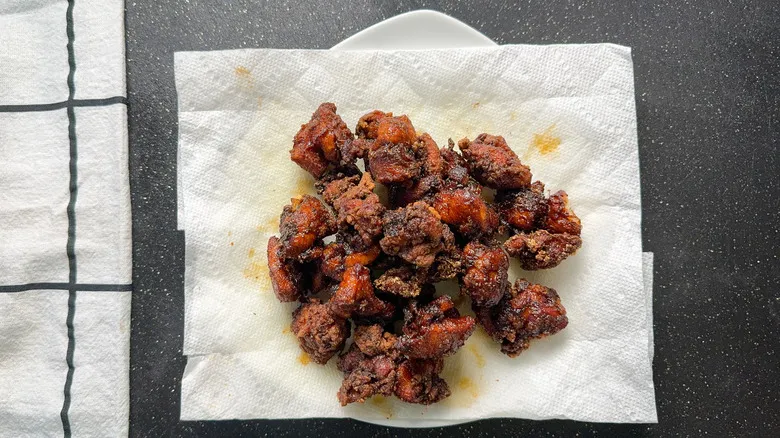
Fry the chicken in batches again for approximately 30 seconds, or until it turns a deep brown and becomes crispy. Then, transfer it to a fresh set of paper towels.
Step 15: Plate the chicken
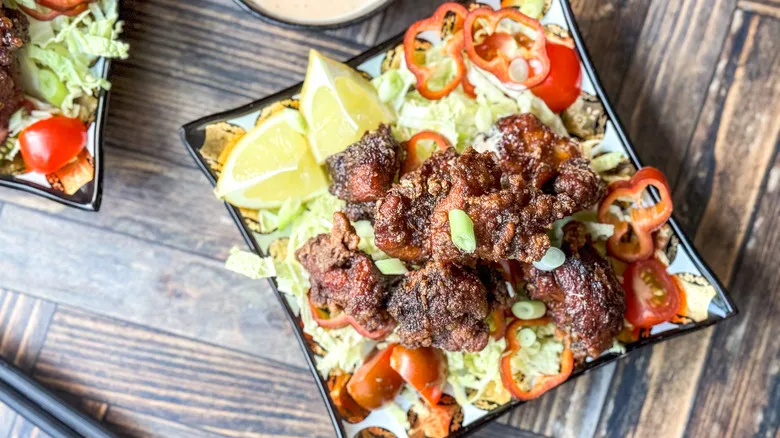
Spoon some cabbage, tomatoes, and pepper slices into shallow bowls, then add the hot karaage chicken on top. Finish by garnishing with sliced scallions and lemon wedges.
Step 16: Serve with the mayo dipping sauce
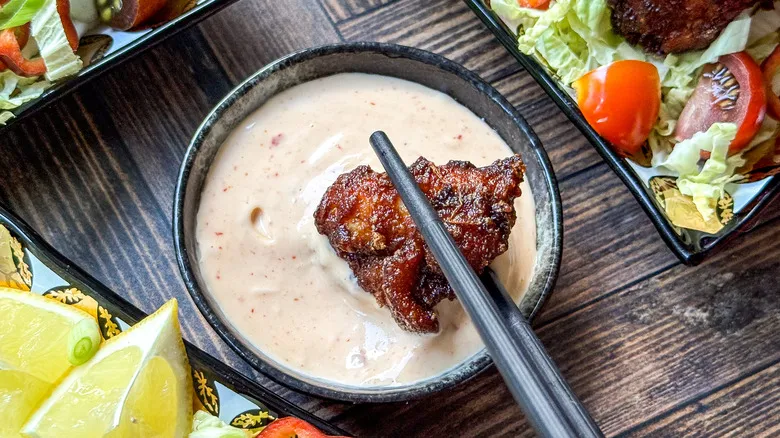
Accompany with mayo dip for dipping.
What is Kewpie mayo?
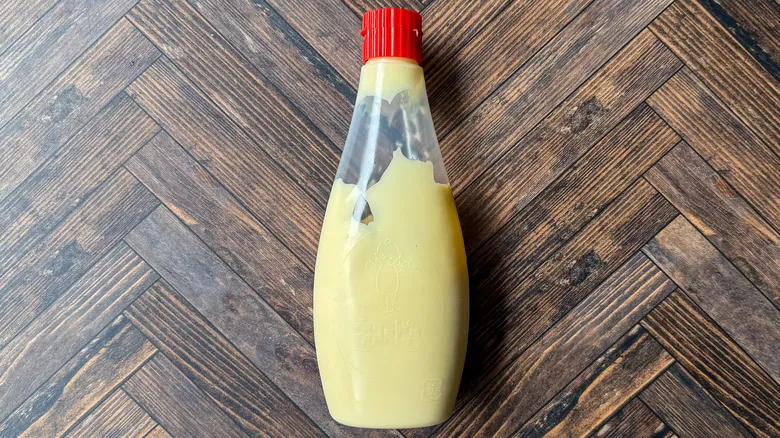
Kewpie mayo is a luxuriously creamy and rich Japanese mayonnaise that has been delighting taste buds since 1925. Created by Toichiro Nakashima, this product was inspired by the growing popularity of mayonnaise in the United States. He aimed to craft a "healthier version" by incorporating double the yolks and eliminating sugar entirely. The original recipe features a blend of rice, red wine, and apple cider vinegar, which not only aids in emulsification but also imparts a tanginess often missing from American mayonnaise. Additionally, the vinegar helps to reduce the pH level, enhancing the mayo's stability at room temperature.
The Kewpie mayo bottle is not only charmingly whimsical, adorned with the image of the Kewpie doll, but also highly functional. It expels excess oxygen to inhibit bacterial growth inside. The red nozzle is uniquely star-shaped, allowing for precise and decorative dispensing of the mayo. Beyond its design, it’s the light yet custardy texture and the tangy umami flavor that keep fans returning for more.
Are there any substitutions for potato starch?
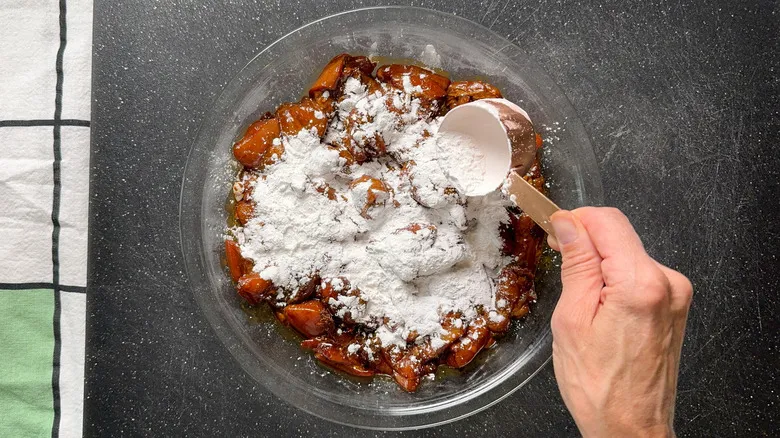
Potato starch is obtained in liquid form from raw potatoes and then dried to create a fine powder. This powder serves as an excellent thickening agent and a perfect coating for achieving crispy fried dishes. Kinnaird prefers to use 100% potato starch in her recipe because it adheres well to the meat and maintains its integrity during double frying. However, she notes that there are alternative ingredients that can yield similar outcomes.
If potato starch is unavailable, you can substitute it with an equal amount of cornstarch. Cornstarch has finer particles than potato starch, which may result in a slightly less crunchy texture when fried. Traditionally, wheat flour, particularly fine cake flour, is also used in karaage preparations. While the wheat flour coating imparts a pleasant nutty umami flavor (unlike the relatively flavorless potato and cornstarch), the downside is that the crust may be softer after frying. Another option is to combine 50% wheat flour with 50% potato or cornstarch for a balanced result.
Recommended
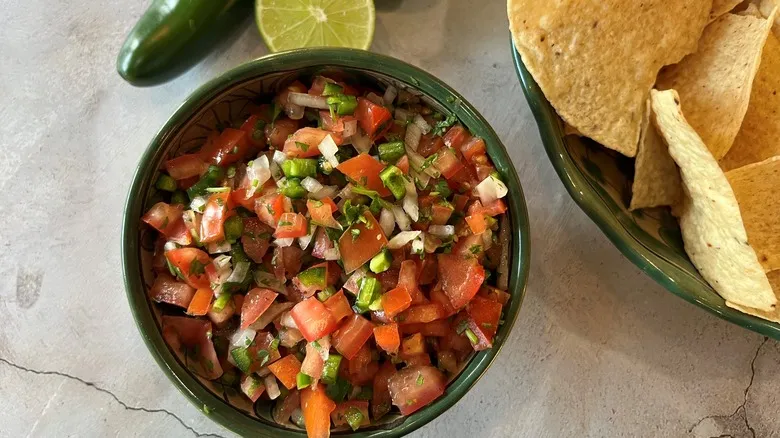
Classic 5-Ingredient Pico De Gallo Recipe

Classic Sausage Balls With Cranberry Mustard Recipe
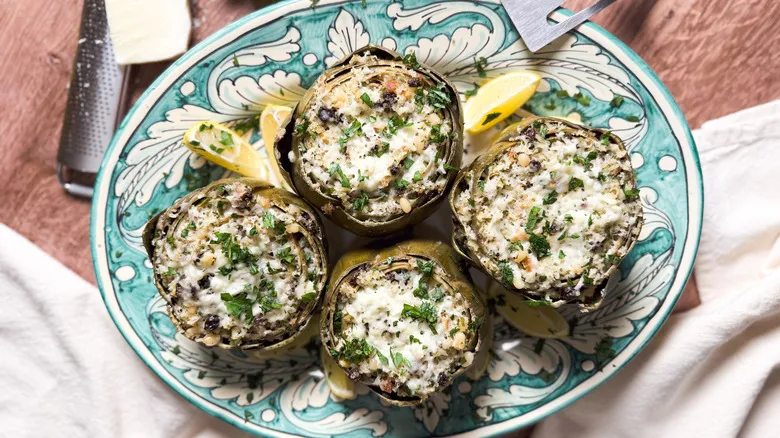
Sicilian-Style Stuffed Artichokes Recipe
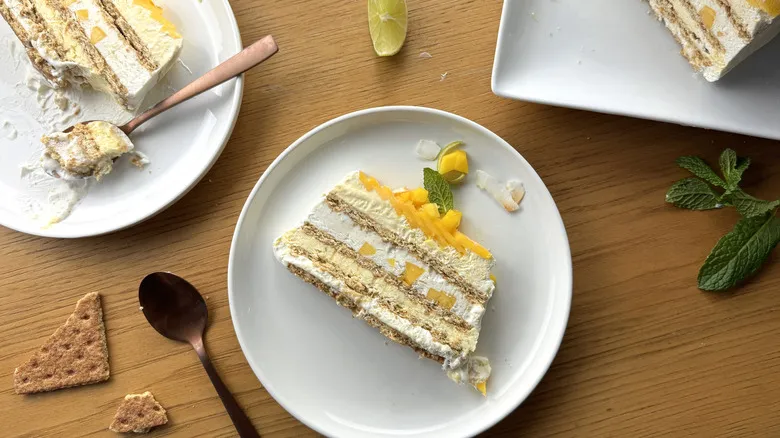
Frozen Mango Float (Filipino Icebox Dessert) Recipe
Next up

